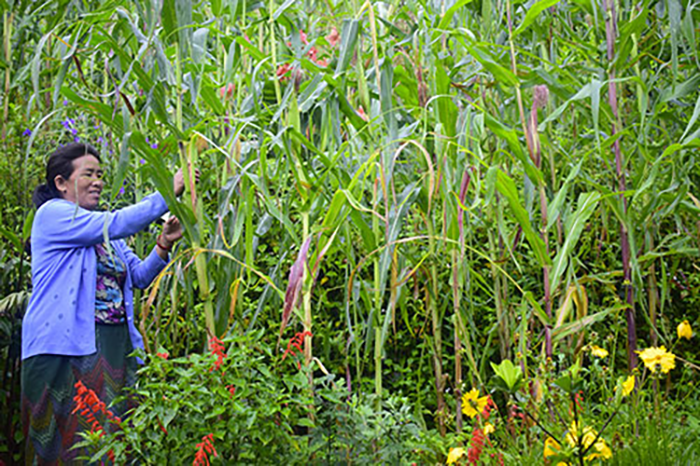Choki Wangmo
The three major maize growing dzongkhags in Bhutan—Chukha, Dagana and Mongar—lost 78 percent of the crop yield due to the traditional method of storage.
This is according to a report published in the Bhutanese Journal of Agriculture.
The major storage loss was reported in Dagana at 38.21 percent. Hot and humid climate and crop variety in Dagana is attributed for higher loss. In all three dzongkhags, the losses were caused by insect infestation after three months of storage.
The damage from insect infestation during storage was comparatively higher in March and higher losses were reported in low altitude gewogs of the dzongkhags. Sampheling gewog in Chukha had the highest loss due to it’s location.
But the loss from insect infestation was lower in the hanging method. The method involves hanging cobs from the ceilings of houses. “Lower insect damage could be due to better ventilation.” Significant loss from the hanging method, however, was reported from Karmaling, Kana, and Thangrong gewogs.
Moisture content of maize was found to be at an optimum level and did not affect the storage. Moisture content of maize sampled from storage attic floor method was in the range of 9.28-13.98 percent while moisture content in the hanging method was in the range of 9.14-13.44 percent, within the recommended range.
Damage from fungal infection was comparatively lower than that of insect infestation. However, fungal damage increased from December to March in all three dzongkhags.
Maize is a staple food for many Bhutanese, especially in the six eastern and southern dzongkhags.
According to records with the agriculture ministry, maize cultivation constituted 46.3 percent of total cultivated area for cereals.
In 2017, total maize production was recorded at 94,051 metric tonnes from 66,043 acres of land with the highest production in Trashigang, Mongar, Samdrupjongkhar, Samtse, Tsirang, Dagana, and Pemagatshel.
However, due to poor post-harvest management technologies, annual post-harvest loss in monetary terms was valued at Nu 181 million at a price of Nu 10 per kilogramme.
Although there were no data and published studies on crop storage loss, it was observed that the traditional method of storage is vulnerable to fungal infections and storage pests growth.
The study recommended the stakeholders to develop effective storage facilities to minimise storage loss of maize from infections.
Under the national organic flagship programme, National Post-Harvest Centre will look after post-harvest management, processing and value addition of the produces.


